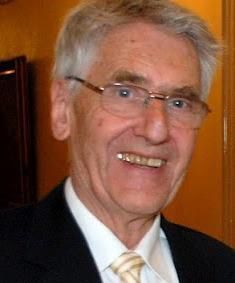
Harry Meinardi
1932 - 2013
It is with profound sadness that the League learned last week of the death of its former President (1989-1993) and 2001 winner of the League's Lifetime Achievement Award, Harry Meinardi. Harry was the retired Director of Epileptology of the Stichting Epilepsie Instellingen Nederland in Heemstede, the Netherlands and Professor of Epileptology at Radboud University in Nijmegen. He had also served as President of the League's sister organization the International Bureau for Epilepsy.
Harry had an international orientation from the outset. He was born in Nice, France , spent much of his childhood in the Dutch East Indies (Indonesia), received his medical education in the Netherlands and spent many years pursuing basic research at the Rockefeller University in New York. He was one of those unique individuals who moved easily between the many psychosocial and medical issues of epilepsy and the study of the basic mechanisms of epilepsy in the laboratory. His leadership skills benefitted the ILAE and the IBE as well as the many junior colleagues whom he mentored.
The international epilepsy community has lost a major figure, but his legacy remains in the many people he helped bring to the epilepsy cause.
Obituary
Tribute by Emilio Perucca, ILAE President 2013-2017
Tribute by Ted Reynolds, ILAE President 1993-1997
In Memoriam Harry Meinardi
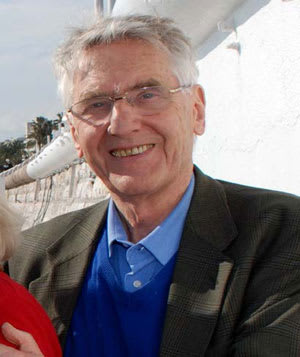
The end of 2013 brought sad news for all those who care for people with epilepsy around the world. Just a few days before Christmas, Harry Meinardi died peacefully in The Hague, The Netherlands, the city where he lived for the last part of his highly active life. His passing away is a huge loss for the epilepsy community. Just to indicate his stature and degree of involvement in professional as well as lay advocacy activities, Dr. Meinardi was the only person ever to be elected to the Presidency of both the International League against Epilepsy (ILAE) and the International Bureau for Epilepsy (IBE).
Harry Meinardi was born in Nice, France, on February 20th, 1932. At the time of his birth, his parents lived in the Dutch East Indies (currently Indonesia), where his father worked in the sugar industry and his mother worked as a physician in government hospitals. When Harry was 7 years old, his father went to Burma (Myanmar) where the sugar industry seemed to be more prosperous, and later to India to escape the Japanese invasion of South East Asia. Harry remained with his mother and brother Jan in the Dutch East Indies, which in 1942 was itself invaded by the Japanese during the Pacific War. Harry’s mother was arrested and died in prison, and little Harry himself was imprisoned in Semarang Bangkong, a Japanese concentration camp for boys and old men, where he remained until August 23, 1945, 8 days after the end of the war.
That period had a profound influence on his life, and I remember him sharing with me and other colleagues his memories of happy as well as tragic moments of his childhood in the Far East, as well as his love for that country and its people. Up to the last few weeks of his life, he was secretary of the Bangkonger, the little journal of the former inmates of the concentration camp, and attended in Arnhem the commemoration of the victims of the Pacific War. Touchingly, just before his death he forwarded to me and to other friends a picture that he took at the Arnhem commemorations of a statue representing a concentration camp boy, naked apart from his shorts and carrying the tools of the forced labour: a patjol (an Indonesian type spade) and an axe.
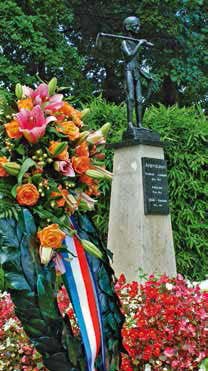
In February 1946, he was repatriated to The Netherlands as a war orphan, together with his brother Jan and accompanied by aunt Hella, his mother’s sister. After attending a Grammar School in The Hague, he entered the Medical School at Leyden University, where he obtained his M.D. degree in 1957. While working part-time as a student in the Endocrinology Laboratory, he got to know the "Meer en Bosch" centre for patients with epilepsy (today known as Stichting Epilepsie Instellingen Nederland - SEIN). This encounter was a landmark event not only for his scientific career, but for the whole world of epileptology. His newly acquired interest in epilepsy led him to engage, soon after his graduation as a physician, in a three-year research project under the guidance of Professor Jan-Willem Duyff, on the effect on nerve tissue of a recently developed progesterone derivative. This project, that led him to acquire his Ph.D. diploma in 1960, was the outset of his studies on the occurrence of seizures in connection with the menstrual cycle.
After obtaining a professional certification in Neuropsychiatry in 1961, he accepted a fellowship position in Biochemistry and Mathematics at the Rockefeller University in New York, where he worked from 1962 to 1966 under the guidance of Dr. Lyman C. Craig. It was during his stay at Rockefeller that he isolated from brain tissue a peptide of 27 amino acids with the properties of substance P which was found to provoke epileptiform discharges when applied to the brain in picomolar amounts. In 1966, he moved back to the Netherlands to take up employment at the Institute for Epilepsy Management (Instituut voor Epilepsiebestrijding) in Heemstede. That was the beginning of an outstanding career that led him to progress from the position of Neuropsychiatrist/Research Scientist (1966-1968) to Director of Research (1968-1975), General Director (1975-1982) and Director of Epileptology (1982-1992). From 1984 to 2000 he was also Professor of Epileptology at the Catholic University of Nijmegen – one of the very first academic chairs in epileptology in the whole of Europe - as a well deserved recognition of his scientific contribution and dedication to teach and disseminate knowledge on the epilepsies.
His scientific contribution spanned across several key aspects of experimental and clinical epileptology. He was one of the pioneers who demonstrated the importance of pharmacokinetic variability as a factor affecting interindividual differences in the response to antiepileptic drugs (AEDs), and the value of therapeutic drug monitoring in the optimization of epilepsy therapy. In fact, well before I had the privilege to meet him personally in the late seventies, his name had become very familiar to me by reading his contributions to the WODABIDOFs (Workshops on the Determination of Antiepileptic Drugs in Body Fluids), the proceedings of which taught me a lot as I was just approaching this area of research as a young trainee. His interest in pharmacology, clinical trial methodology and outcome assessment in epilepsy was a constant in his career and led him and his collaborators to contribute important findings on a wide range of topics, including the efficacy and side effects profile of old and new AEDs, the comparative teratogenicity of epilepsy treatments, the relationship between serum AED levels and clinical response, the chronopharmacology of AEDs, the relative merits of monotherapy and polytherapy in epilepsy management, and the treatment of status epilepticus.
Dr. Meinardi was a man with a vision, and will be remembered for more than his contribution to epilepsy research. In his striving to improve the life of people with epilepsy, he had clear in his mind the need not only to improve the quality of medical care, but also to address the psychological and social constraints. In that respect, he was among the first to recognise the benefits of sport for people with epilepsy: in a seminal article written 25 years ago, anticipating the theme of the ILAE Stand Up for Epilepsy Campaign, he advised physicians to “encourage epilepsy patients to participate in sporting activities to enhance their physical fitness, self-esteem, and social integration.” He also promoted many initiatives to address disparities in epilepsy care and to reduce the diagnostic and treatment gap in developing countries. I remember his keen interest in herbal medicines for epilepsy, and his dream that people in the tropics could someday grow in their villages plants that could be used as inexpensive treatment against seizures. He played a key role in establishing the EPICADEC (Epilepsy Care in Developing Countries) Foundation and in promoting through it several projects in the underprivileged world. When EPICADEC ceased its activities in 2002, Dr. Meinardi generously arranged for the Foundation’s residual funds to be transferred to ILAE and IBE to support the Global Campaign against Epilepsy (GCAE). Indeed, these funds are still being used in these very days to maintain GCAE projects conducted jointly by ILAE-IBE and the World Health Organization (WHO).
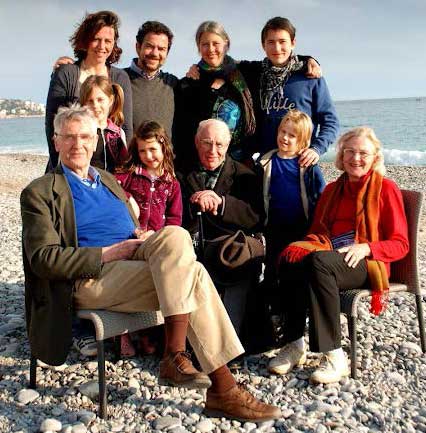
Dr. Meinardi’s contribution to epilepsy associations and scientific societies span over several decades, and culminated in his election to the Presidency of IBE (1977-1981) and ILAE (1989-1993). He also served as Chair of the Dutch Chapter of ILAE, Chair and Executive Director of EPICADEC, Secretary of the Scientific Advisory Council of the Dutch Nationaal Epilepsie Fonds, Advisor on Epileptology to WHO, Regional Facilitator for Africa for the GCAE, member of the International Brain Research Organization (IBRO), and Honorary Consultant Professor at the Neurointernal Department, Shanxi Medical College, People’s Republic of China. His achievements have been recognised by many prizes and awards, including the ILAE-IBE Ambassador for Epilepsy Award (1971), the Von Bodelschwingh Prize (1976), the Officer of the Order of Oranje Nassau, a royal distinction (1982), and, most notably, the ILAE-IBE Lifetime Achievement Award ( 2001).
About 10 years ago, he went into retirement but still conducted an active life, enjoying his many trips at home and abroad with his dear wife Annemarie, and visiting his beloved son Floris, daughter Hermelyn and grandchildren Paolo, Elena, Anna and Pablo. Because Hermelyn’s family lived in Italy, he learnt decent Italian, which he enjoyed practising with me during our occasional telephone conversations. In the last few years his health deteriorated gradually, and I was saddened that he declined the invitation to attend the Past Presidents Symposium at the first ILAE-IBE Regional African Congress in Nairobi. Knowing how dear ILAE, IBE and Africa were to his heart, that decision must have been difficult for him to make.
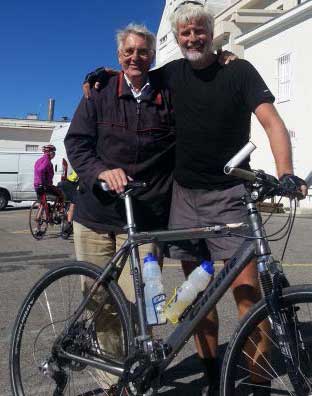
Still he continued with the tradition of updating his friends at the end of each year with recollections of family activities in the previous 12 months, as well as with delightful commentaries on the history and culture of the places that he visited. His December 2013 letter came a little earlier than usual, and made it clear that it would be his last.
Since his early years, when as a boy he was imprisoned in a concentration camp, he lived as a soldier, fighting tirelessly to fulfil his mission for people with epilepsy. He also died as a soldier. I salute him with the same words that his beloved family wrote in the card announcing his passing away:
Those we loved, don’t go away
They walk beside us every day
Unseen, unheard but always near
Still loved, still missed, still very dear.
Emilio Perucca
President of ILAE, and one of Harry’s many friends
Harry Meinardi (1932-2013): A Tribute
I first met Harry in June 1968 at the European Epilepsy Conference (“European Institute”) organised by IBE in Dunblane, Scotland. As Director of Research at a major Dutch Epilepsy Institution Harry’s friendly interest in my first research efforts were much appreciated by me at the time. From slightly different backgrounds we have since then been in regular contact as colleagues, collaborators and friends through our common interest in the science, treatment, care, politics and history of epilepsy.
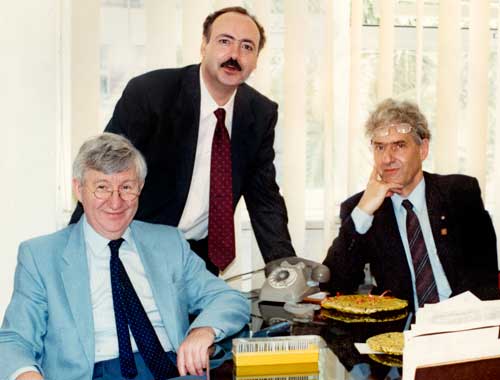
Throughout the 1970’s we both participated in the biennial “Workshops on the Determination of Antiepileptic Drugs in Body Fluids”, the so-called WODADIBOF Meetings. In the late 1960’s and early 1970’s blood level monitoring of antiepileptic drugs was a new scientific frontier in epilepsy and Harry initiated the first meeting in Heemstede in 1972. During the 1980’s we met at a series of British/Danish/Dutch ILAE Chapter meetings, culminating in the Northern European Symposium, i.e. including other Scandinavian countries, in 1989.
From 1989 to 1993 Harry was President of ILAE and I had the pleasure of supporting him on the Executive as a Vice President. When I succeeded him as President (1993-1997) Harry was likewise a very supportive Past President.
Throughout the last 45 years there have been innumerable friendly encounters at international, regional and national Conferences or Symposia (e.g. neuro-transmitters, memory functions etc) throughout the world. I particularly remember in 1991 Harry and I were both invited to lecture in Messina in Sicily and our reward was a delightful all day boat trip to the Aolian Islands, escorted by Raoul Di Perri and Franco Pisani. I also recall the occasional pleasant visit to Heemstede and to Harry’s home in The Hague.
I last met Harry, appropriately enough, at the Centenary Congress of ILAE in Budapest in 2009, but since then we have continued to keep in touch and collaborate on a series of articles on the history of IBE and ILAE in International Epilepsy News.
The Netherlands has been at the forefront of the Epilepsy Movement before and since the foundation of ILAE in Budapest in 1909, in which Harry’s country played a leading role. As Director of one of the most famous Epilepsy Centres in the world Harry was the epitome of that tradition following in the footsteps of Louis Muskens, Bernard Christian Ledebor, Albert Lorentz de Haas, Otto Magnus and Joop Loeber. Harry, however, was unique among them and indeed all other epileptologists in serving as President of both the Bureau (1977-1981) and the League (1989-1993). This of course reflected his commitment to every aspect of patient care and academic epileptology, from the neurochemical and neuropharmacological to the medical, social and political. This also culminated in his appointment as perhaps the first Professor of Epileptology in the world.
Harry’s whole career was committed to people with epilepsy locally, nationally and internationally. This he carried out with great dedication, skill and diplomacy. He had a friendly and engaging style, facilitated by an almost British sense of humour, which endeared him to his professional colleagues. He was not driven by any philosophical or religious inclinations, but by practical, humanitarian and diplomatic considerations, with enormous attention to detail. The epilepsy movement has lost a great champion, reflected in his many achievements. I will personally miss our regular, friendly, humorous but ultimately serious and constructive interactions over nearly 5 decades.
Ted Reynolds
Subscribe to the ILAE Newsletter
To subscribe, please click on the button below.
Please send me information about ILAE activities and other
information of interest to the epilepsy community